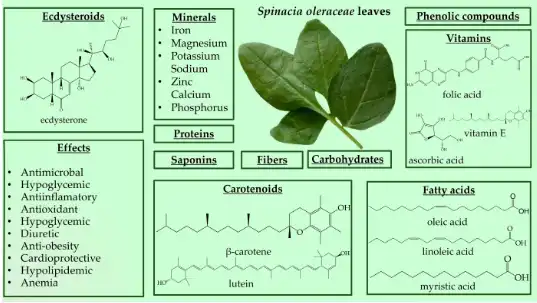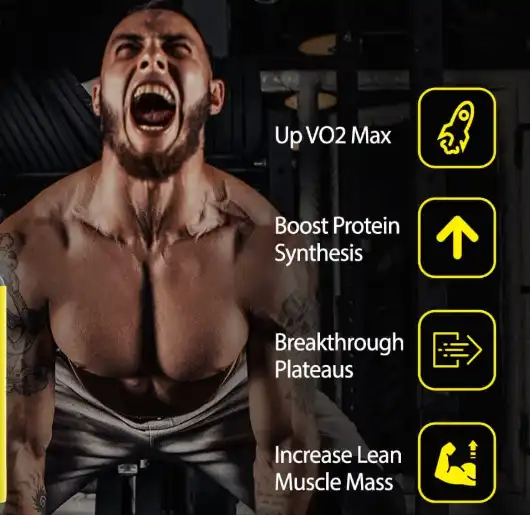Ecdysterone powder has gained significant attention in the fitness and bodybuilding community due to its purported muscle-building properties. However, there is often confusion surrounding its classification and whether it falls under the category of anabolic steroids. This article aims to explore the nature of ecdysterone powder, its effects on the human body, and its legal status to determine whether it can be considered an anabolic steroid.

How does ecdysterone compare to traditional anabolic steroids?
Ecdysterone Powder, also known as 20-hydroxyecdysone or beta-ecdysterone, is a naturally occurring compound found in various plants, including spinach and quinoa. Unlike traditional anabolic steroids, which are synthetic derivatives of testosterone, ecdysterone is a phytoecdysteroid – a plant-derived compound that shares structural similarities with insect molting hormones.
The mechanism of action of ecdysterone differs significantly from that of anabolic steroids. While anabolic steroids primarily work by binding to androgen receptors in the body, ecdysterone is believed to exert its effects through non-hormonal pathways. Research suggests that ecdysterone may activate protein synthesis and promote muscle growth by interacting with estrogen receptor-beta (ER-β) and potentially other cellular targets.
One of the key differences between ecdysterone and anabolic steroids is their impact on the body's hormonal balance. Anabolic steroids can significantly disrupt the endocrine system, leading to a host of side effects such as testicular atrophy, acne, and mood swings. In contrast, ecdysterone is not known to cause hormonal imbalances or the typical side effects associated with anabolic steroid use.
Studies have shown that ecdysterone may offer some anabolic effects comparable to those of certain anabolic steroids. A 2019 study published in the Archives of Toxicology found that ecdysterone increased muscle mass and physical performance in athletes, with effects similar to those observed with some anabolic androgenic steroids. However, it's important to note that the research on ecdysterone is still limited, and more studies are needed to fully understand its effects and potential risks.
What are the legal implications of using ecdysterone?
The legal status of Ecdysterone Powder is a topic of interest for many athletes and fitness enthusiasts. Unlike anabolic steroids, which are classified as controlled substances in many countries, ecdysterone is currently not regulated as a performance-enhancing drug in most jurisdictions.
In the United States, ecdysterone is considered a dietary supplement and is legally available for purchase without a prescription. The Dietary Supplement Health and Education Act (DSHEA) of 1994 allows for the sale of ecdysterone as long as it is marketed as a dietary supplement and not as a drug or performance enhancer.
However, the legal landscape surrounding ecdysterone may be subject to change. In 2019, the World Anti-Doping Agency (WADA) added ecdysterone to its monitoring program, which tracks substances that are not currently prohibited but are under review for potential inclusion on the prohibited list. This move was prompted by concerns about its potential performance-enhancing effects and the possibility that it could be misused in competitive sports.
It's worth noting that while ecdysterone is not currently banned by WADA or most sports organizations, athletes should exercise caution when using any supplement. Some products marketed as ecdysterone may contain undeclared ingredients or contaminants that could lead to a positive doping test. As with any supplement, it's crucial to source ecdysterone from reputable manufacturers and consider third-party testing to ensure purity and safety.
Can ecdysterone be used as a safe alternative to anabolic steroids?
The potential of Ecdysterone Powder as a safer alternative to anabolic steroids has generated considerable interest among athletes and researchers alike. While ecdysterone may offer some anabolic effects, it's important to approach claims of it being a "safe steroid alternative" with caution.
One of the main advantages of ecdysterone over traditional anabolic steroids is its apparent lack of androgenic effects. Anabolic steroids are known to cause a range of side effects due to their impact on androgen receptors throughout the body. These can include liver damage, cardiovascular issues, and hormonal imbalances. Ecdysterone, on the other hand, does not appear to interact with androgen receptors and has not been associated with these typical steroid-related side effects in the limited studies conducted so far.
Research on ecdysterone's safety profile is still in its early stages, but preliminary studies have shown promising results. A 2006 study published in the IUBMB Life journal found that ecdysterone did not exhibit any acute or subacute toxicity in rats, even at high doses. However, it's crucial to note that long-term studies on humans are still lacking, and the full extent of ecdysterone's effects and potential risks remains to be determined.
While ecdysterone may offer some benefits for muscle growth and athletic performance, it's important to remember that it is not a magic bullet. Its effects are likely to be more modest compared to those of powerful anabolic steroids. Additionally, the optimal dosage and long-term effects of ecdysterone supplementation are not yet well-established.
For individuals considering ecdysterone as an alternative to anabolic steroids, it's crucial to approach its use with realistic expectations and to prioritize a comprehensive approach to fitness and nutrition. Proper diet, consistent training, adequate rest, and overall healthy lifestyle habits remain the foundation for achieving sustainable improvements in muscle mass and athletic performance.
Conclusion
While Ecdysterone Powder shares some anabolic properties with traditional steroids, it is not classified as an anabolic steroid in the conventional sense. Its unique mechanism of action, legal status, and apparent lack of severe side effects distinguish it from synthetic anabolic steroids. However, more research is needed to fully understand its long-term effects and optimal use. As with any supplement, individuals should consult with healthcare professionals before incorporating ecdysterone into their regimen and should be aware of the potential for regulatory changes in the future.
If you are also interested in this product and want to know more product details, or want to know about other related products, please feel free to contact lea_slsbio@163.com,WhatsApp+86 13193326505.

References
1. Parr, M. K., et al. (2020). Ecdysteroids: A novel class of anabolic agents? Biology of Sport, 37(3), 281-290.
2. Dinan, L. (2001). Phytoecdysteroids: biological aspects. Phytochemistry, 57(3), 325-339.
3. Isenmann, E., et al. (2019). Ecdysteroids as non-conventional anabolic agent: performance enhancement by ecdysterone supplementation in humans. Archives of Toxicology, 93(7), 1807-1816.
4. Wilborn, C. D., et al. (2006). Effects of methoxyisoflavone, ecdysterone, and sulfo-polysaccharide supplementation on training adaptations in resistance-trained males. Journal of the International Society of Sports Nutrition, 3(2), 19-27.
5. Gorelick-Feldman, J., et al. (2008). Phytoecdysteroids increase protein synthesis in skeletal muscle cells. Journal of Agricultural and Food Chemistry, 56(10), 3532-3537.
6. Bathori, M., et al. (2008). Phytoecdysteroids and anabolic-androgenic steroids--structure and effects on humans. Current Medicinal Chemistry, 15(1), 75-91.

